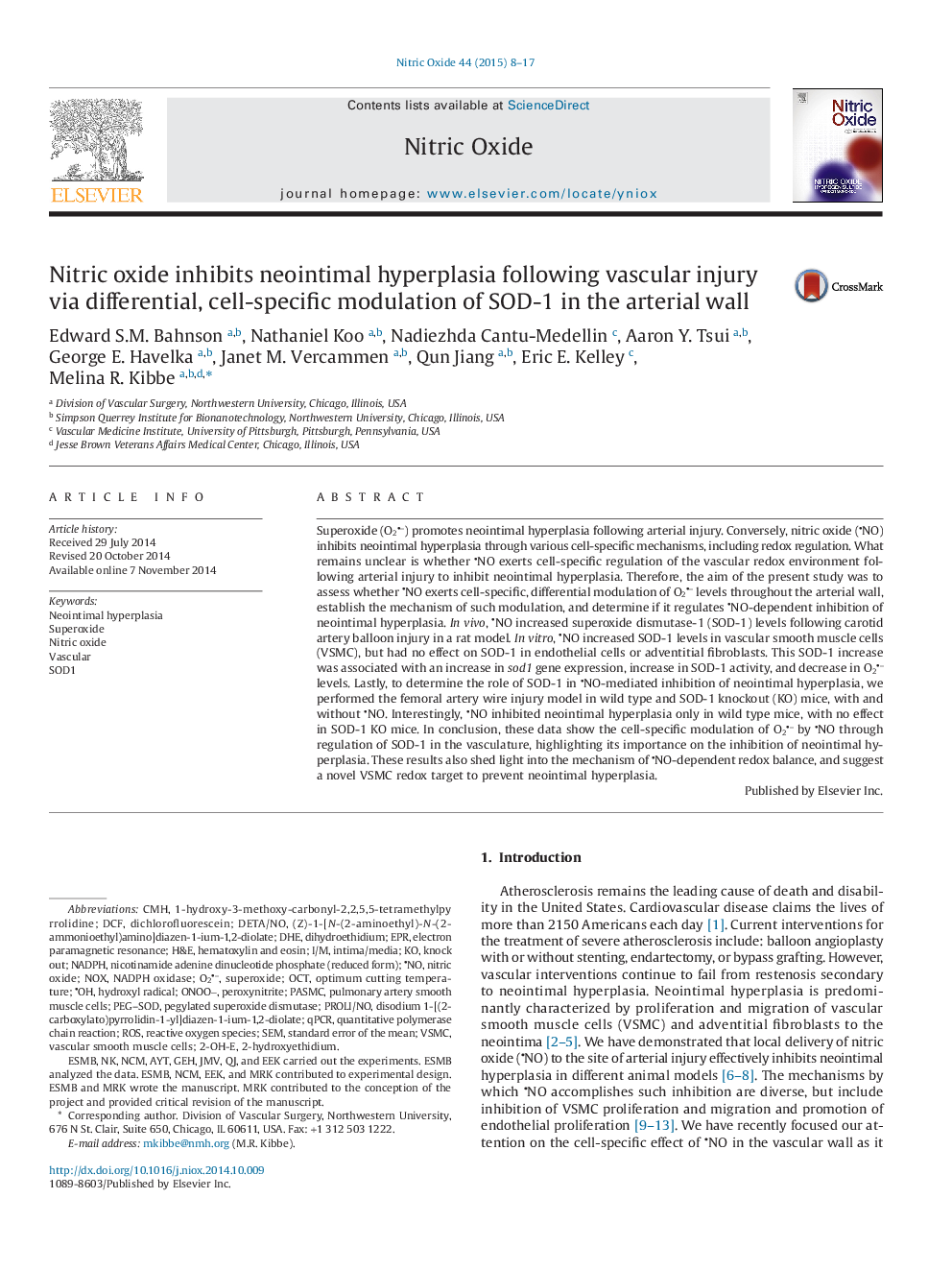| Article ID | Journal | Published Year | Pages | File Type |
|---|---|---|---|---|
| 2000515 | Nitric Oxide | 2015 | 10 Pages |
•Nitric oxide increases SOD-1 protein levels in vascular smooth muscle cells, but not in endothelial cells or adventitial fibroblasts.•The •NO-dependent increase in the SOD-1 levels is preceded by an increase in gene expression; it also correlates with an increase in SOD-1 activity and a decrease in superoxide levels.•Nitric oxide is more effective at inhibiting the development of neointimal hyperplasia after wire femoral injury in wild-type mice than in SOD-1 knockout mice.•Nitric oxide regulates vascular smooth muscle cell proliferation by differentially regulating the redox environment in these cells.
Superoxide (O2•−) promotes neointimal hyperplasia following arterial injury. Conversely, nitric oxide (•NO) inhibits neointimal hyperplasia through various cell-specific mechanisms, including redox regulation. What remains unclear is whether •NO exerts cell-specific regulation of the vascular redox environment following arterial injury to inhibit neointimal hyperplasia. Therefore, the aim of the present study was to assess whether •NO exerts cell-specific, differential modulation of O2•− levels throughout the arterial wall, establish the mechanism of such modulation, and determine if it regulates •NO-dependent inhibition of neointimal hyperplasia. In vivo, •NO increased superoxide dismutase-1 (SOD-1) levels following carotid artery balloon injury in a rat model. In vitro, •NO increased SOD-1 levels in vascular smooth muscle cells (VSMC), but had no effect on SOD-1 in endothelial cells or adventitial fibroblasts. This SOD-1 increase was associated with an increase in sod1 gene expression, increase in SOD-1 activity, and decrease in O2•− levels. Lastly, to determine the role of SOD-1 in •NO-mediated inhibition of neointimal hyperplasia, we performed the femoral artery wire injury model in wild type and SOD-1 knockout (KO) mice, with and without •NO. Interestingly, •NO inhibited neointimal hyperplasia only in wild type mice, with no effect in SOD-1 KO mice. In conclusion, these data show the cell-specific modulation of O2•− by •NO through regulation of SOD-1 in the vasculature, highlighting its importance on the inhibition of neointimal hyperplasia. These results also shed light into the mechanism of •NO-dependent redox balance, and suggest a novel VSMC redox target to prevent neointimal hyperplasia.
Graphical AbstractFigure optionsDownload full-size imageDownload as PowerPoint slide
